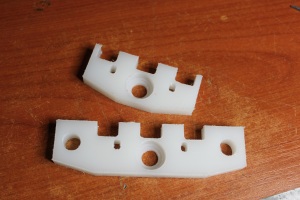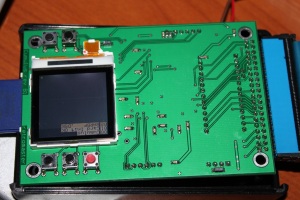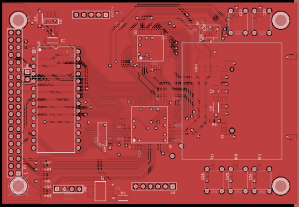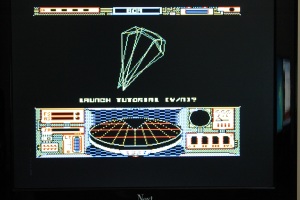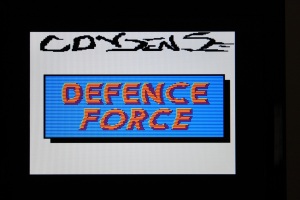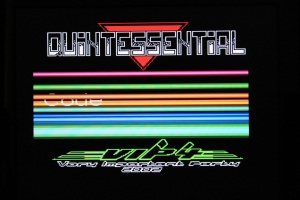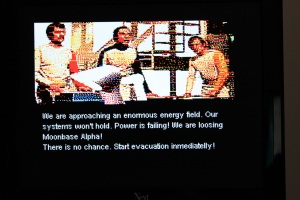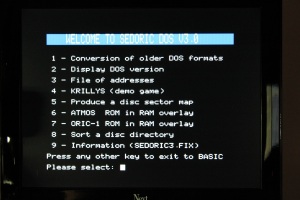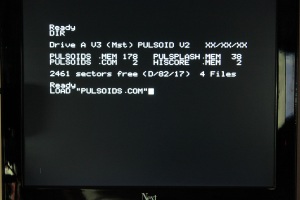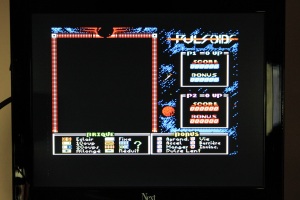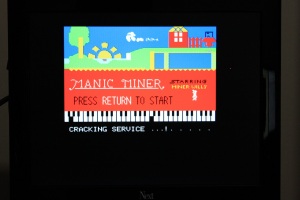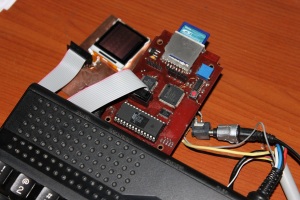-
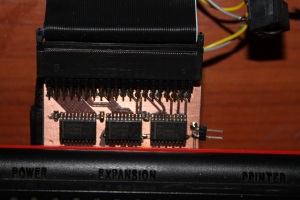
-
CumuluBus Buffer + 80-wire IDE Cable
-
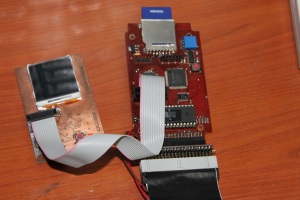
-
Cumulus + 80-wire IDE Cable + Adapter
-

-
Cumulus running Barbitoric 1
-
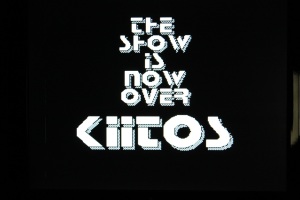
-
Cumulus running Barbitoric 2
I’ve finally managed to solve the stability problems exhibited by Cumulus. The solution was to implement buffering very similar to what is found in the AmpliBus.
At first, I noticed once more that attaching Cumulus directly to the Oric expansion bus provides very stable operation. I’ve also noticed that, using a cable connection causes major signal integrity problems, including crosstalk visible in the oscilloscope, even with a very short cable. Operation without a cable connection is not feasible, however, due to mechanical stresses placed on the connectors during SD card insertion/removal and button presses.
The first solution I tried was using better cabling. The 80-conductor IDE cables seemed to be very suitable for this purpose, as the ground lines between the signal lines significantly reduce crosstalk, to allow very fast signalling rates. I made a couple of custom adapters to be able to use the 80-pin cables, simple connections, no buffering.
The result was a definite improvement, but bus problems still existed, occurring at much lower frequency, but occurring nevertheless. To me, this indicated that the drive strength of the bus lines on the Oric side was very low, and/or cable loading on the bus lines had a big effect. The next logical step was to implement buffering, similar to the AmpliBus device. I replaced the adaptor on the Oric side with a new design that buffers all Oric output signals (address and control lines) with three 74(A)HCT541 chips. The 541 is the same as the 241/244 used in the original AmpliBus except for a pinout that makes PCB layout easier.
This time, I obtained excellent results, with absolutely stable operation. I’ve also tested operation over the full length of the cable. The IDE cable is great because it gives very good signal quality and it is still commonly available. The only problem with the IDE cables is that despite higher number of pins on the connector, actually, in terms of usable pins, it is one (or two) pins short, because many pins are grounded on the cable itself. To work around this, I opted to move the /RESET and VCC lines to a separate connector. There will not be any problems with simple cable connections for these lines.
At the moment, I am also testing if a regular 34-pin floppy cable will work with buffering. I’ve made yet another adapter for this purpose. So far it hasn’t worked yet but I’d like to figure out why before giving up. Based on the results of these tests, I’ll decide whether the new PCB design will contain a 34-pin connector or a 40-pin (IDE) connector.
It is still unclear to me how the original Microdisc drive even worked under these conditions. Perhaps, it is the pairing of different families of logic with Cumulus and Oric that caused the problems. In any case, a clock pulse (of just 1 Mhz) that does not look like a square wave is a big red flag, in the first place. Nevertheless, I am glad to have solved the stability problems.
